How To Change Apple Music Profile Picture
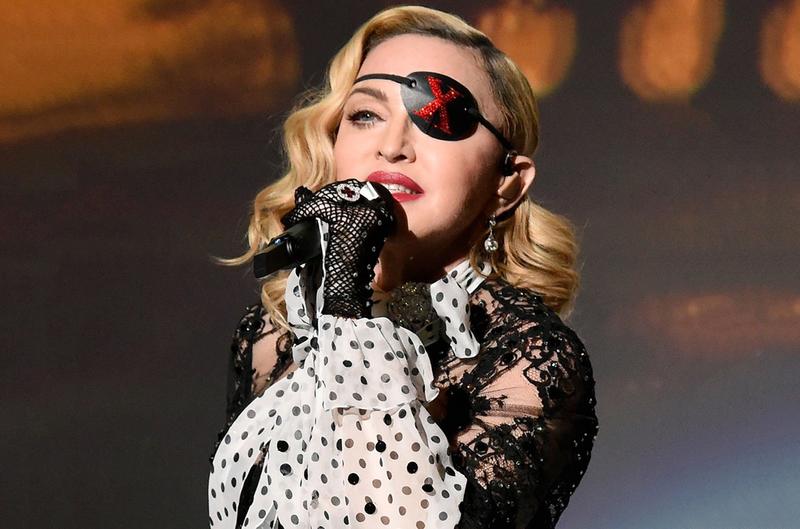
Music can be very powerful. Out of all of the music fabricated over the last 70 years, some songs were powerful enough to influence important political and cultural movements.
When enough people can relate to a song's message and audio in a like way, history's made and icons are born. Check out these xxx songs that have made a huge impact from the moment they beginning hitting the airwaves.
Neb Haley, "Stone Effectually the Clock" (1954)
Bill Haley has the distinction of being the first musician to popularize rock and whorl in the '50s. His ring, Nib Haley & His Comets, sold over 60 million records worldwide thanks to hits like "Milkshake, Rattle and Gyre" and "Run across You Later, Alligator".
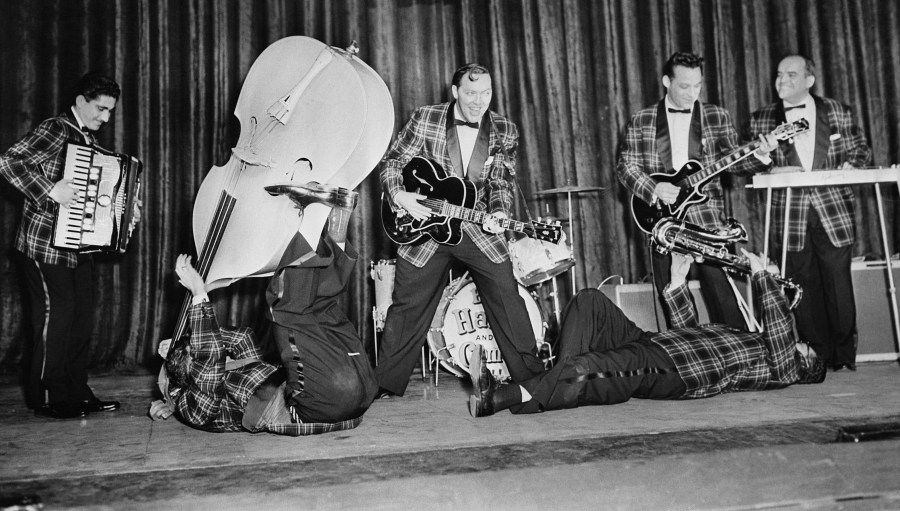
The vocal that gained the band major popularity was "Rock Effectually the Clock". While it wasn't the offset rock song to striking the charts, it was anthemic for a growing trend of '50s rebellious youths. The song encouraged young people to stay up belatedly and political party, which was controversial and revolutionary for its time.
Chuck Drupe, "Johnny B. Goode" (1958)
Drupe's 'Johnny B. Goode' told the story of a boy from New Orleans who grew up to atomic number 82 a rock band. In reality, Berry used "Johnny" to sing about his own rebellious experiences as 1 of the world'south commencement stone stars. It was the get-go taste of musicians singing nearly the improvident lifestyle that accompanies famous singers.
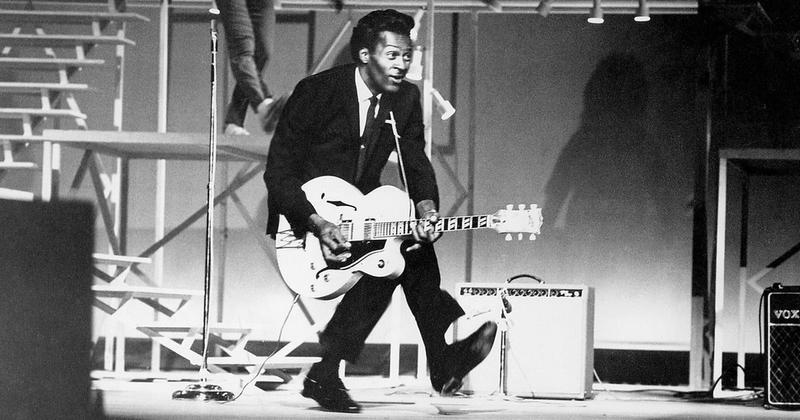
Berry wrote four other songs about his rock and roll persona, 'Johnny B. Goode,' to continue telling stories nigh becoming a rock star. The name for his persona didn't come up out of anywhere, either. Berry was born at 2520 Goode Avenue, and he took farther inspiration from his piano role player, Johnnie Johnson.
Ritchie Valens, "La Bamba" (1958)
Originally a Mexican folk song, Valens added a rock and curl rhythm to the lyrics and turned information technology into an instant crossover hit. Information technology was the first fully Spanish stone song to perform well on the Billboard charts at the time.
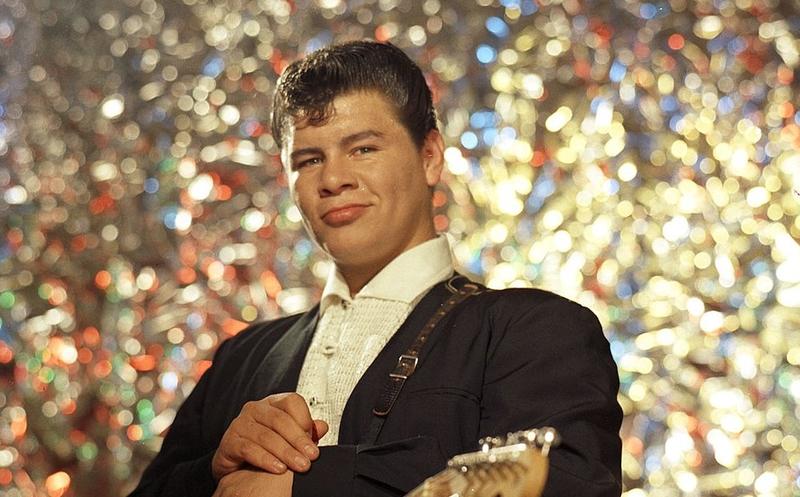
At merely 17 years old, Valens was set for stardom. Unfortunately, on Feb 3, 1959, Valens, Buddy Holly and J.P. "The Big Bopper" Richardson were killed in a plane crash. The tragic event afterward became known equally "The Mean solar day the Music Died."
Ray Charles, "What'd I Say" (1959)
Widely credited equally one of the commencement soul songs, "What'd I Say" started out as an improvisation during a concert. With a niggling time left during a set, the enthusiastic crowd encouraged Charles and the band to continue playing (and to record the excitable free energy).
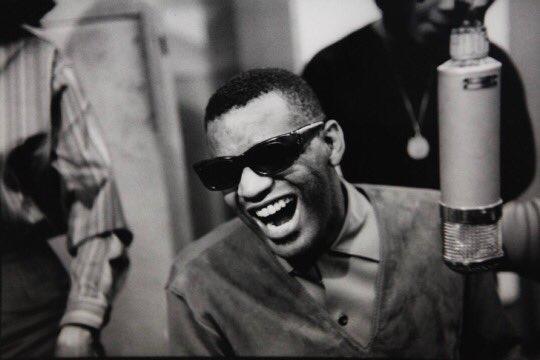
The song'south exciting blend of gospel, rhumba, rock and rhythm and blues launched Charles into the mainstream radio stations. Following Fiddling Richard'southward "Tutti Frutti", it caused major controversy, as the sexual implication in the lyrics of the song's 2d one-half made it one of the nearly explicit songs on the radio.
Sam Cooke, "A Change is Gonna Come up" (1964)
This powerful song written by Cooke was a response to the struggles faced past him and those around him during the Civil Rights Movement. Furious with the way his friends and family were being treated, and after hearing Bob Dylan's "Blowin' in the Wind," Cooke added his take on the injustices towards African Americans.
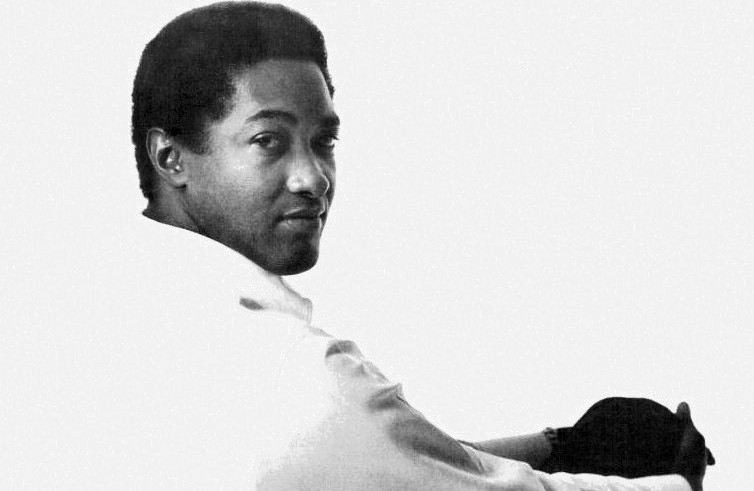
Two weeks before the song was released, Cooke was shot in the chest and killed at a cabin by the motel's manager. She had claimed self-defense, but information technology was widely disputed. Subsequently his death, the song became even more of import to the Ceremonious Rights Motility.
The Beatles, "I Wanna Concord Your Hand" (1964)
After John F. Kennedy'due south assassination, the state was in a collective lull. Out of nowhere, Brit-pop phenomenon the Beatles crossed over to the Us with upbeat, positive sounds. The world was prepare to experience happy again when The Beatles stepped out on the scene.

The mega-hitting "I Wanna Concur Your Hand" was their get-go No. 1 single on Billboard's Hot 100 chart. The land was still reeling from the loss of Kennedy, only their infectious hitting turned up America's collective energy. When they performed their upbeat music on The Ed Sullivan Show, 70 million viewers turned in to run into the instant superstars.
The Mamas and The Papas, "California Dreamin'" (1965)
The bully foursome was a leader in the countercultural move of the '60s, blending folk and gospel with stone music. "California Dreamin'" was the upbeat song that channeled America'southward collective longing for change during a time of revolutionary challenges to the country.
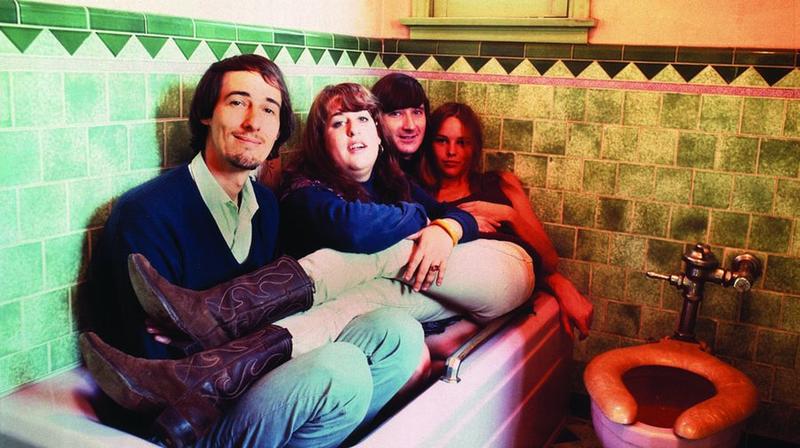
The vocal was allegorical of the struggle to escape the nation'south divisive issues. The Vietnam War and the Civil Rights Movement acquired divides amid families and communities. Simply with lyrics about retreating to sunny and relaxing California, often idealized in beach music and movies, America vicious in dear with The Mamas and The Papas's new sound.
Aretha Franklin, "Respect" (1967)
When you lot starting time hear Franklin's vocalisation on this rails, you know you're near to hear a legend sing. Franklin's "Respect" was a landmark song for the feminist motility. The empowering control for equality is largely considered to be the all-time R&B song of all time.

Originally written and released by Otis Redding in '65, Franklin's rendition made the vocal the anthemic classic it is today. Its success and powerful bulletin paved the way for endless black female singers to limited themselves and command respect in the music industry.
Jefferson Airplane, "White Rabbit" (1967)
This vocal was the perfect representation of the end of the innocence of the '60s. The ring's natural language-in-cheek retelling of the children'due south story Alice in Wonderland mixed with a lot of double entendre made this far-out song an instant archetype.
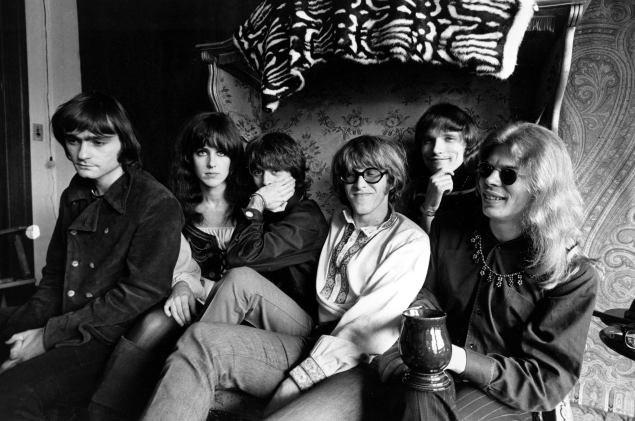
During the late '60s, a disillusioned generation experimented with hallucinogens to escape the threatening Vietnam War. When Jefferson Airplane released this song, it was the outset big radio striking to find a way to coyly address the growing trend of using drugs to escape "downwards the rabbit hole."
David Bowie, "Rebel Rebel" (1974)
As punk and arena rock were still gaining steam, glam rock was a force in the '70s, and Bowie was its fearless leader. Bowie was the commencement headlining music artist to experiment with personas and gender-angle. Throughout his legendary career, Bowie connected to push boundaries.
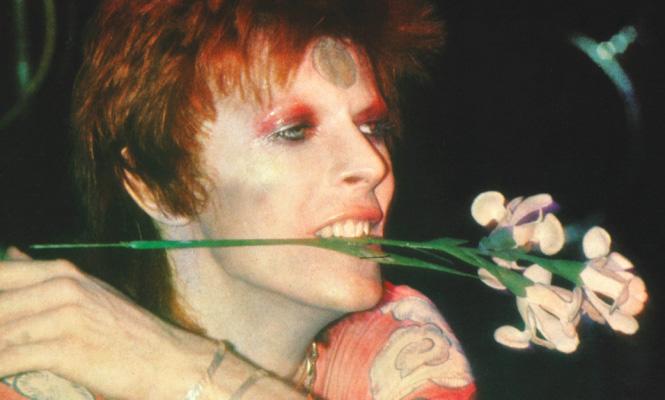
"Rebel Rebel" is a standout runway that fully encapsulates Bowie's rebellious edge. With each of his personas, like Ziggy Stardust, Aladdin Sane and The Thin White Duke, Bowie incorporated outrageous outfits and sounds to amplify his glamorous music. He also paved the way for other gender-angle performers like Grace Jones, Annie Lennox and Marilyn Manson.
Queen, "Bohemian Rhapsody" (1975)
The epic rock ballad is one of the highest selling songs ever and perfectly encapsulated the hard guitar sounds that were pop at the fourth dimension. Queen was able to distinguish their audio from contemporaries like Led Zeppelin, Centre, and Pink Floyd with songs like "Maverick Rhapsody".
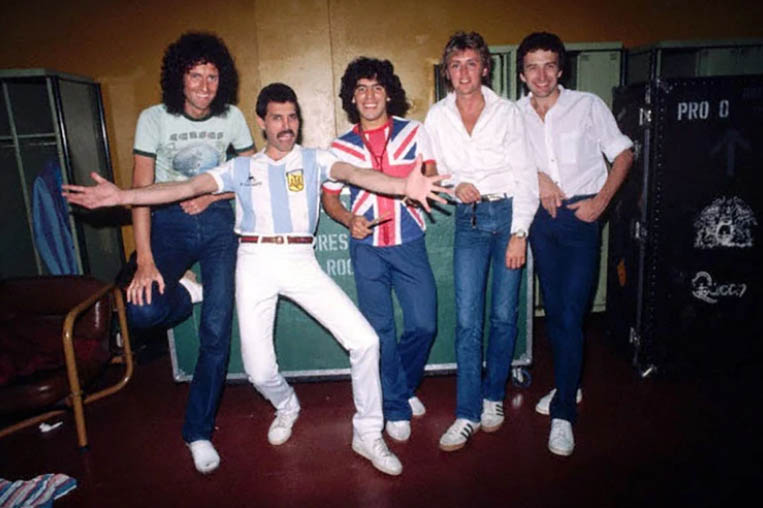
Running just under six minutes, the track takes operatic, hard rock and dramatic shifts to elevate it above all other rock songs of the decade. We don't need SNL's Wayne's World friends Wayne and Garth to remind u.s. how swell the vocal is. Only information technology certainly helped innovate the song to another generation of instant fans.
Donna Summer, "I Experience Beloved" (1977)
Summer's "I Feel Love" was i of the most popular songs of the disco era of the '70s. While there are many other songs that are classics from the disco era, the Library of Congress added "I Experience Love" to the National Recording Registry as "culturally, historically, or aesthetically important."
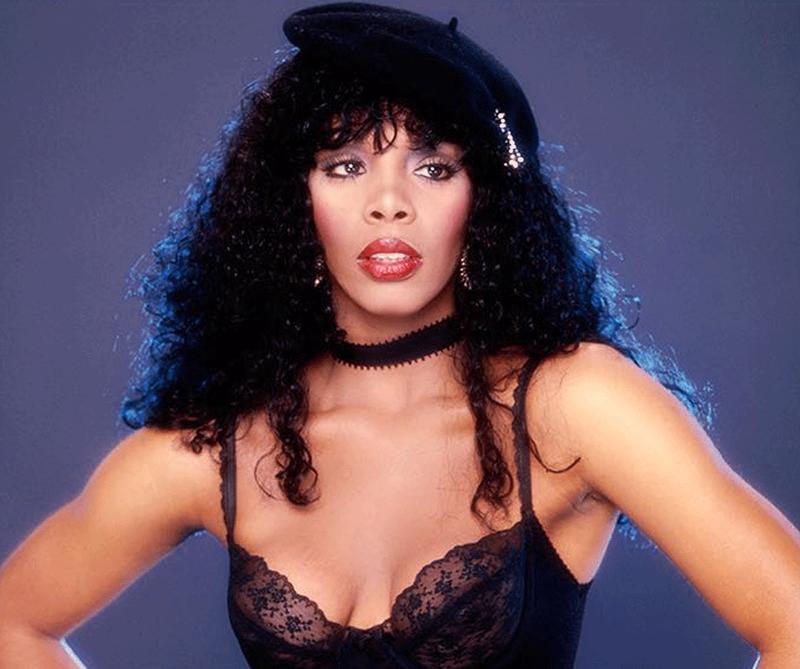
"I Feel Love" is widely credited with originating East.D.M. (electronic dance music). While other dance songs were recorded with orchestras, the production team produced the vocal with a synthesizer. Respected music producer Brian Eno declared after hearing the song, "Look no further. This single is going to alter the audio of lodge music for the adjacent 15 years."
Sex Pistols, "God Salve The Queen" (1977)
"God Relieve the Queen" is the national canticle of the United Kingdom. The Sex Pistols song of the same name is largely credited equally the best punk unmarried of all time. It'southward no surprise they named the song the way they did, as they unapologetically opposed the British Monarchy.
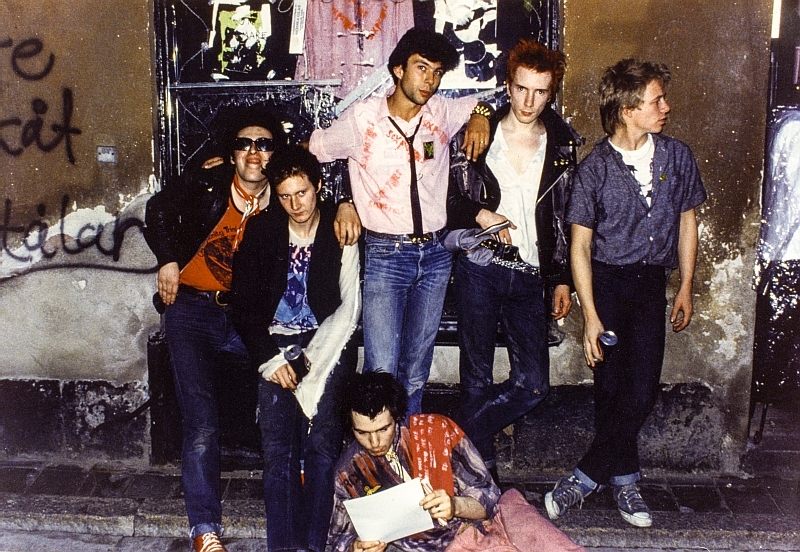
The song was a rallying weep to terminate the mistreatment of poor and middle-class citizens. Comparing the queen to a "fascist regime" acquired the song to be banned and condemned on radio stations, merely that just fabricated the demand greater for the punk sound.
Grandmaster Flash and the Furious 5, "The Message" (1982)
"The Message" by Grandmaster Flash and the Furious V is considered to be one of the commencement rap songs ever made. As rap music was finding its ground, virtually early rap songs consisted of boasting about success or a series of political party chants.
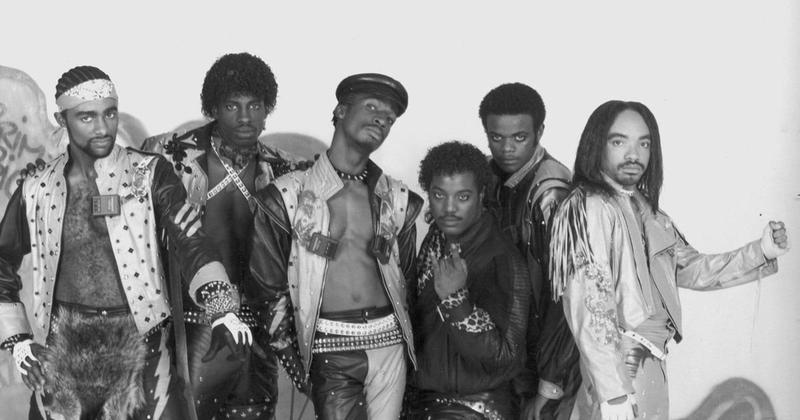
"The Bulletin" stands out for being the first rap song that told the truth almost the struggle of early '80s inner-city life in America. The idea of rapping about daily struggles and injustice was later picked upwardly by legendary rappers including Jay-Z, Notorious B.I.M. and fifty-fifty Rage Against the Machine.
Michael Jackson, "Billie Jean" (1983)
After the success of his album Off the Wall, Jackson's second single from his follow up album Thriller was incredibly successful on the radio as well as on the budding MTV network. It was the first music video of a black musician to be aired on rotation on MTV.
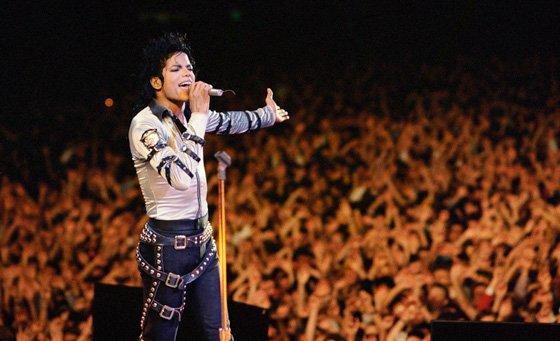
The bass-driven arrangement helped pioneer sleek, mail-soul pop music. The vocal became Jackson's best selling solo single, topping the Billboard Hot 100 nautical chart for seven weeks. It also helped Thriller go the greatest selling album of all time.
Madonna, "Like a Virgin" (1984)
While Madonna was already known for her upbeat dance music, "Like a Virgin" was the first song in Madonna's catalog to peak the charts. Through frequent album and video releases, Madonna created a whole new kind of female superstar. This song in particular also launched her career-spanning commitment to blend organized religion with sexuality.
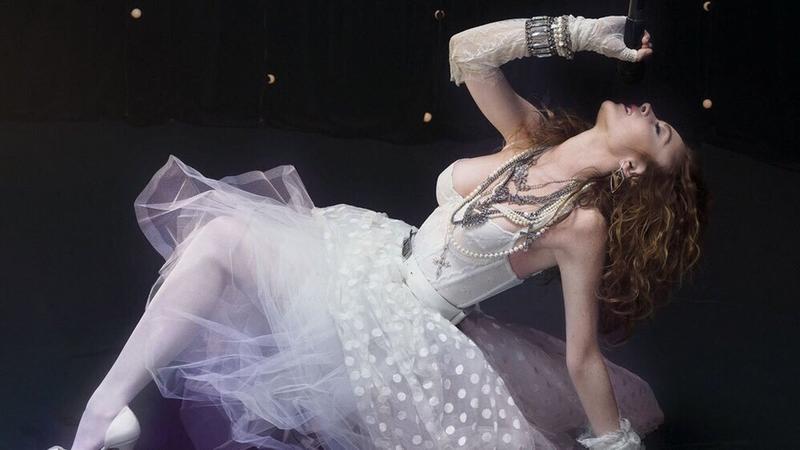
Family and religious organizations were upward in arms over the combinations of religious symbolism and virginal wedding attire worn in the single's music video and live performances. Blending pop music with controversy became a recipe for success for the endless female person pop singers to follow in her footsteps, earning the title of Madonna-Wannabes.
Prince, "Purple Rain" (1984)
The eponymous motion picture, soundtrack, and vocal are the greatest opportunity fans volition likely e'er have to know the man backside the legend. Royal Rain was the only film that Prince starred in but did not direct, but it was still his near revealing artistic moment. Historically, it was the first, total-length autobiographical rock musical film to farther launch its star's career.
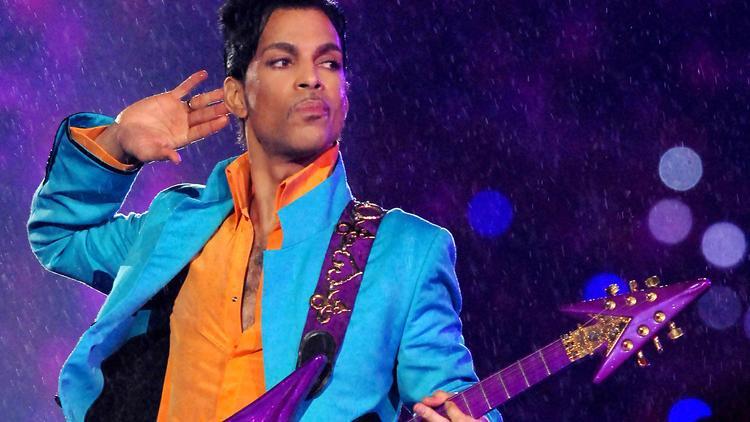
The pic'due south height moment was the title track, which combined gospel, R&B, rock and orchestral music. "Purple Rain" kicked off a new chapter in the world of R&B. The heavy guitar riffs at the beginning and end made the vocal more attainable to mainstream rock audiences, and it remains the icon'due south signature song.
Public Enemy, "Fight The Power" (1989)
"Fight the Ability" incorporates various samples and references to African American culture, social injustices, and black church services. The song'due south lyrics contain revolutionary rhetoric calling the listener to "fight the powers that be." It became a successful striking that called on the black community to become more than politically agile.
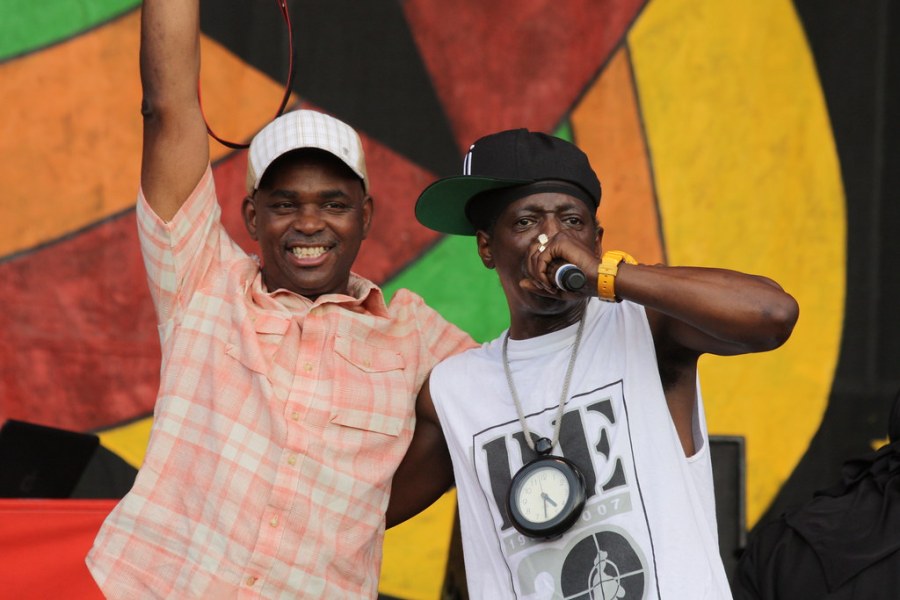
In the song, the group as well takes shots at John Wayne and Elvis for not being proper representations of their community. Lyrics like, "Most of my heroes don't appear on no stamp," helped illustrate the underrepresentation of black success in American history.
Nirvana, "Smells Like Teen Spirit" (1991)
In the late '80s and early '90s, arena rock was total of instrumental theatrics and big-haired ring members. And then came Nirvana with "Smells Like Teen Spirit" which is credited every bit the offset alternative song to cantankerous into mainstream success.

The vocal and accompanying video brought an cease to the hair metal and stadium rock that dominated the '80s. The grunge movement was born, thank you to the video's heavy rotation on MTV, and the popular song became an anthem for apathetic kids in Generation Ten.
Whitney Houston, "I Volition Always Love You" (1992)
Houston's comprehend of Dolly Parton's country song remains the acknowledged single by a adult female in music history. Popular music got a taste of gospel with Houston's booming phonation and haunting tone. The instantly recognizable ballad solidified her as a legend, and The Bodyguard Soundtrack remains i of the most successful soundtrack albums of all fourth dimension.
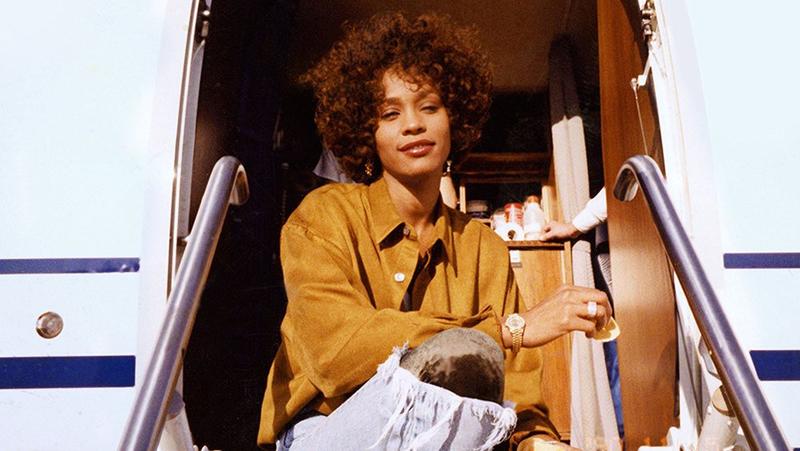
The vocal spent 14 weeks at number i on the Billboard Hot 100 nautical chart and is one of the best-selling singles of all time. After Houston's untimely death on Feb. eleven, 2012, the song topped the The states iTunes charts, and the single returned to the Billboard Hot 100 charts at number three.
Pulp, "Common People" (1995)
The Britpop invasion of the mid-nineties consisted of stone bands similar Oasis, Blur and Radiohead. Their pop songs were oftentimes either upbeat songs about beingness rock stars or haunting alt-rock ballads. Simply no other vocal is a better representation of this era and its radical listeners than Pulp'due south "Common People".
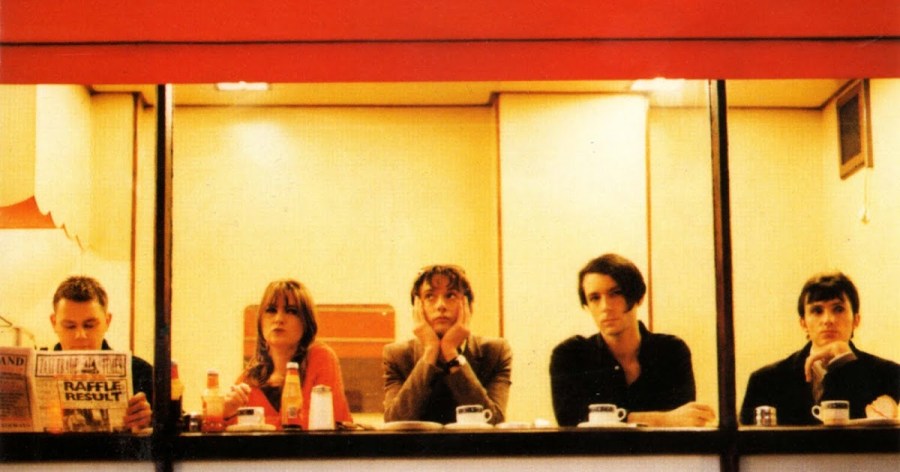
The trip the light fantastic vocal covered incredibly hard material that was instantly relatable to a generation of center to lower-grade citizens. By telling the story of a wealthy daughter having fun with a poor boy and hearing her bragging about her financial security, the song became an anthemic standard for the working class around the world.
Backstreet Boys, "I Desire It That Way" (1999)
At the end of the '90s, people grew weary of alternative/grunge music and wanted to feel happy once more. Enter the era of bubblegum pop. Songs most dearest and dancing were all over the radio from musical acts like The Spice Girls, Ricky Martin, N*Sync and Britney Spears.
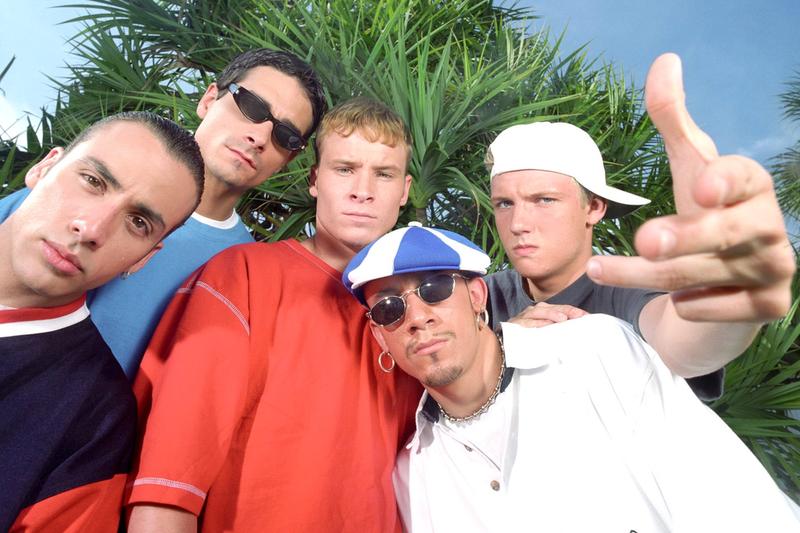
But no other song captures the ethos of bubblegum pop perfection meliorate than the Backstreet Boys' well-nigh celebrated song. Record labels carefully crafted together bonny popular stars to dominate the music industry, and these boys were all the rage. Their catchy chorus and shiny music video launched the genre to a global level and topped the charts in 25 countries.
Christina Aguilera, "Cute" (2002)
Aguilera's Stripped, the follow upwards album to her bubblegum pop debut, was a abrupt dissimilarity to the manufactured, innocent image that many pop stars had at the time. She combined her pop roots with soul, hip hop, metal, rock and roll, gospel and Latin into her anthology. Afterwards denouncing her manufactured innocence with her outrageous "Dirrty" video, Aguilera was ready to get serious.
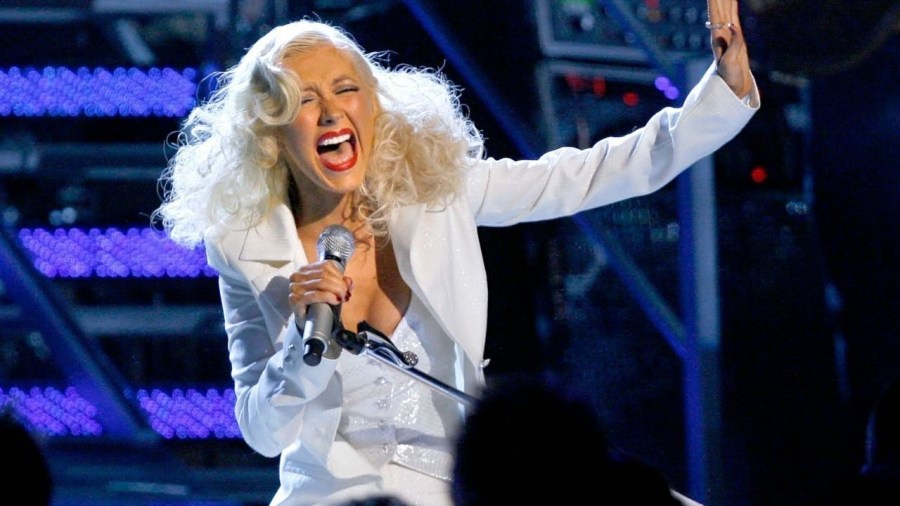
Adjacent, Aguilera released "Cute," the ultimate pop vocal about cocky-empowerment. Its video included imagery of a gay couple kissing in public and a trans woman getting dressed. Both of these visuals were very controversial at the fourth dimension simply made the vocal an instant LGBTQ anthem. Years later, popular stars like Ariana Grande, Demi Lovato, and Selena Gomez credit Aguilera for inspiring them to sing almost female person and LGBTQ empowerment.
Beyonce ft. Jay-Z, "Crazy in Love" (2003)
This is the song that launched Beyoncé into her own field afterward leaving Destiny'south Child. The vocal, which samples The Chi-Lites's 1970 song "Are You My Woman (Tell Me So)", "Crazy in Love" is a gimmicky R&B and popular love song that incorporates elements of hip hop, soul, and 1970s-style funk music.
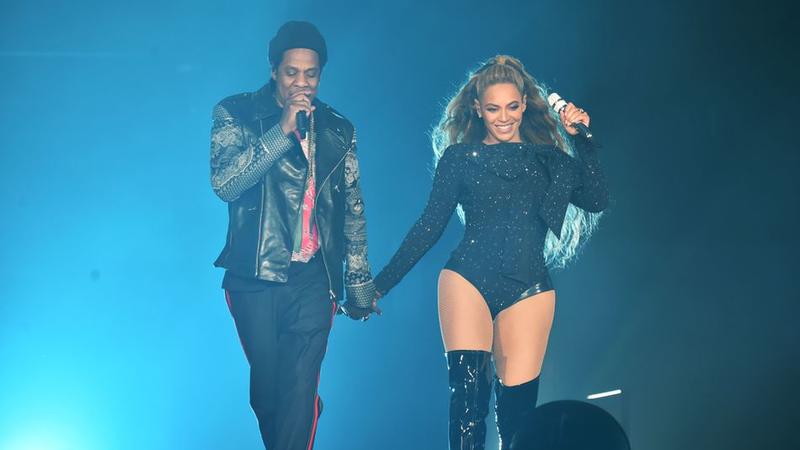
The concept of mixing electric current product techniques with throwback funk would later become a tendency that dominated the new millennium. It certainly helped that legendary rapper Jay-Z added his flow on the song. Petty did we know that they would later become ane of the about powerful musical duos of all time, in large part cheers to their very first duet.
Gnarls Barkley, "Crazy" (2006)
"Crazy" is widely credited as the commencement universal hit song in the new millennium. It blended pop, rock, hip-hop, alternative and many other genres to become one of the most radio-friendly songs across all genres. This is especially impressive because, after the new millennium, the net gave people the power to explore genres rarely played on the radio.
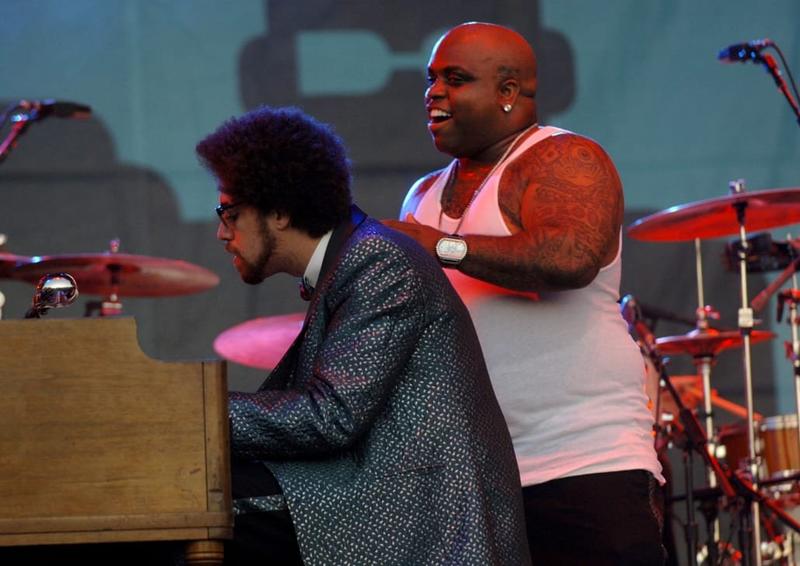
The vocal also started the trend of giving more than credit to the producer behind the music. Gnarls Barkley member Danger Mouse became a household name along with the duo's singer, Cee Lo Dark-green. In the following years, many more than producers and DJs would get superlative billing when songs were released to the public.
Amy Winehouse, "Rehab" (2006)
At a time when the internet and photographers had the power to extensively track the lives of celebrities and musicians, Winehouse's tragic just celebratory song "Rehab" came out. Non only did it reintroduce Motown and soul sounds to mainstream radio for years to come, but it openly addressed the vocalizer's personal struggle with drugs and alcohol.
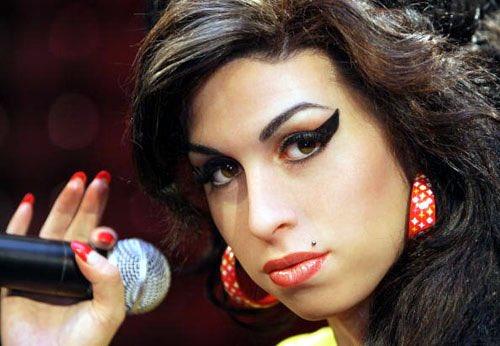
The honesty in her lyrics and catchy chorus made it a worldwide hit at a time when celebrities frequently checked into and out of rehab under the public eye. Unfortunately for Winehouse, the song and her dangerous lifestyle made her vulnerable to the internet tabloids and paparazzi who followed her every troubling turn.
M.I.A., "Paper Planes" (2008)
A surprise hit for Sri-Lankan rapper M.I.A, "Paper Planes" received praise for covering subject area matter oftentimes ignored on mainstream radio stations. The song and accompanying video satirize American perceptions of visa-seeking foreigners and immigrants from Tertiary World nations.

With a chorus that includes a children's choir, African rhythms, a sample from The Disharmonism and gunshots, the anarchistic vocal gave a vocalisation to immigrants and refugees on American airwaves. Thou.I.A. further helped American airwaves include artists from other countries, helping future civilisation-blending artists like ZAYN, BTS and Rosalía.
Kanye West, "Monster" (2010)
This item track from West's historic Cute Dark Twisted Fantasy album is notable for corralling as many powerhouses as possible onto one song. West included artists from dissimilar genres like Jay-Z, Bon Iver, Rick Ross, and introduced the world to Nicki Minaj.
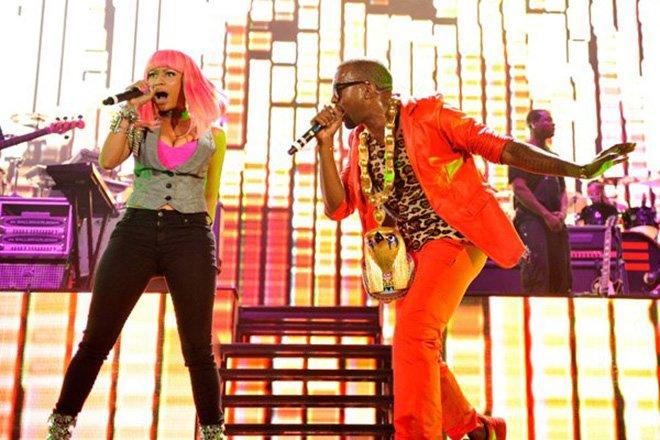
The lyrics and the vocal'due south accompanying video were controversial at the fourth dimension for its all-encompassing horror imagery, besides as its treatment of women. All the same, Minaj's poetry has become the virtually iconic from the song, launching her career as the leading vocalisation of female rap for the next decade to follow.
Rihanna featuring Calvin Harris, "We Found Love" (2011)
Rihanna'due south career was already full of hits that helped bring Caribbean area rhythms back onto the charts. Her foray into trip the light fantastic toe music, even so, became a nautical chart-topping representation of the early on '10s. In this time menstruation, music producers and DJs gained power and name recognition every bit E.D.1000. became more than popular.
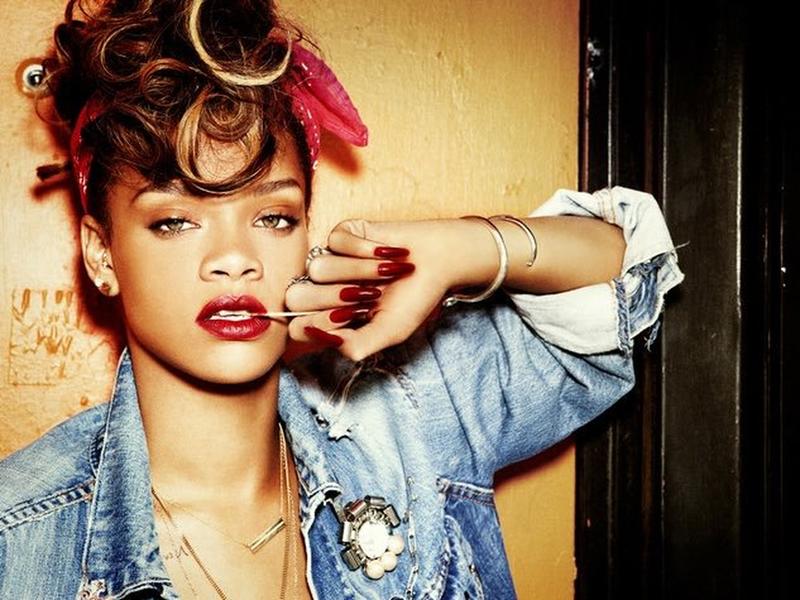
The uptempo, electro-firm song that told a tragic honey story was a mainstay at nightclubs and festivals for years to come. The manufacture took notice, and music producers however try to work with major pop stars to reach similar success years afterward.
Kittenish Gambino, "This is America" (2018)
Purposeful rap was dorsum in a big way in 2018. Gambino'due south rap/gospel song became an instant protest anthem, roofing gun violence and mass shootings, along with longstanding racism and discrimination confronting African Americans. Gambino brought several rappers into the vocal, including 21 Savage, Young Thug, Quavo and others.
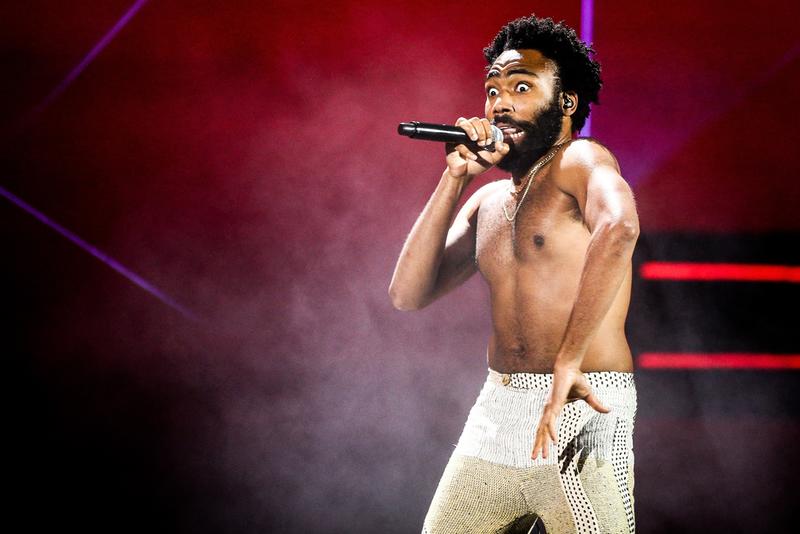
The accompanying video was a series of haunting portrayals of social injustices towards African Americans. The internet spent weeks watching the video, attempting to decode its symbolic imagery. It lead to several thought pieces that tried to brand sense of how the trigger-happy, fast-paced video represented America'southward fierce present.
Source: https://www.ask.com/entertainment/songs-that-changed-music-forever?utm_content=params%3Ao%3D740004%26ad%3DdirN%26qo%3DserpIndex
Posted by: danielshusires.blogspot.com

0 Response to "How To Change Apple Music Profile Picture"
Post a Comment